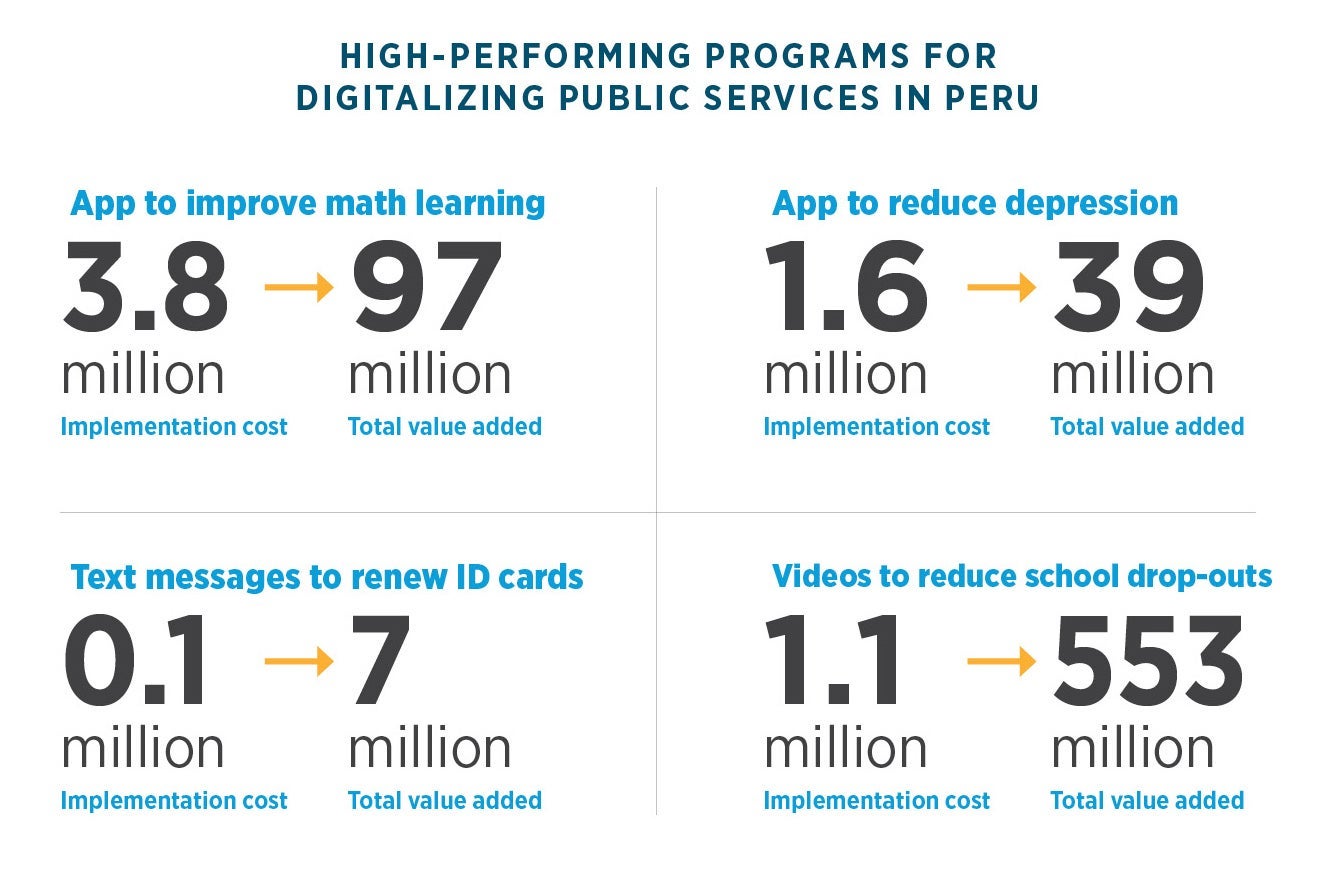A new study identifies high-performing programs that governments in Latin America and the Caribbean can leverage to digitalize public services with a staggering return on investment.
The study, “Digitalizing Public Services: Opportunities for Latin America and the Caribbean”, is part of the Inter-American Development Bank's Latin American and Caribbean Microeconomic Report series. It reviews evidence on a series of policy options, and recommends specific low-cost, high-impact investments for digital public services in education, healthcare, administrative transactions, and fiscal management.
In education, for example, the report finds that a math app for primary school students in Peru can generate $97 million of value added per year with a $4 million annual investment.
In healthcare, app-based psychotherapy to treat depression was found to be three times more cost-effective than face-to-face sessions in Chile, Peru, El Salvador, and Jamaica. In Chile, an annual investment of $1.7 million in that program could generate $60 million in value added per year, while $1.6 million in government spending could generate $39 million in annual value added in Peru.
Non-communicable illnesses such as depression, cardiovascular disease, and diabetes are responsible for half of all deaths in Latin America and the Caribbean and pose a growing economic burden on the region. One inexpensive way to tackle this issue is through text messages, which the report finds are highly effective at promoting healthy eating and physical activity among prediabetic patients.
“This study refutes the perception that investing in technology for the public good is too expensive. Governments in Latin America and the Caribbean have an opportunity to offer highly valuable digital public services in various sectors that require limited resources and can be implemented quickly on a large scale,” noted Eric Parrado, Chief Economist and General Manager of the IDB Research Department.

A key aspect of the findings is that governments must prioritize specific digital solutions by carefully analyzing costs and benefits, as some projects generate much more value for society than others. The authors also highlight the importance of determining the optimal mix in digital projects between technology and human support to avoid a “tech bias.”
The report recommends promoting projects that involve apps, text messages, and videos through smartphones to reach citizens and help close the equity gap. While smartphone access is increasing rapidly in the region, especially among low-income populations, most citizens do not have access to personal computers or tablets at home. The study also suggests offering user-friendly digital applications and promoting the adoption of digital public services, especially among socioeconomically disadvantaged groups. Savings arising from digital public services could be channeled to improve traditional services among populations without access to digital resources.
In education, the report highlights a project that reduced dropout rates among students who were shown videos about the economic returns of acquiring more years of schooling. In Peru, an annual government investment of $1.1 million in that program would generate $553 million of value added per year. Secondary school completion rates in Latin America and the Caribbean are 64% on average, compared to 79% in OECD countries.
Digitalization of transactions and public finances
Digitalization can also streamline government transactions in the region, many of which are slow and cumbersome. For instance, many citizens inadvertently let their identity cards expire, preventing them from accessing a range of services and benefits. According to the study, text message reminders helped increase the probability of ID renewal among Panamanians from 59% to 72%.
Digitalization can also benefit public finances to solve the region’s most pressing fiscal challenges. Countries can use digital services to increase revenue collection and the efficiency of public spending, as well as improve fiscal transparency. The report presents evidence of the effectiveness of four digital solutions: automatic pre-filling of tax returns, electronic tax filing, electronic procurement, and systems that allow government offices to share data for better targeting of subsidies.
About the IDB
The Inter-American Development Bank is devoted to improving lives. Established in 1959, the IDB is a leading source of long-term financing for economic, social and institutional development in Latin America and the Caribbean. The IDB also conducts cutting-edge research and provides policy advice, technical assistance and training to public and private sector clients throughout the region. Access our virtual tour.
Andres Cavelier
